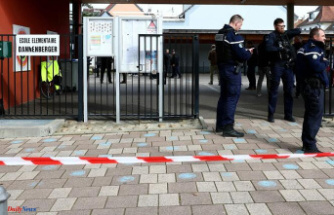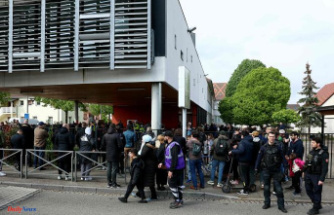Balancing on a rocky outcropping of Lion’s Head, a mountain whose oft-photographed apex is 2,195 feet above Cape Town, I felt on top of the world.
Below me were panoramic views of the impossibly gorgeous city. To the west, the Atlantic Ocean, ringed by wide beaches on which white-capped waves crashed. In every other direction lay more peaks (including iconic flat-topped Table Mountain), rolling green hills and vineyards. An entire week stretched ahead in Africa’s second-most visited country. (FYI, Morocco takes the top spot.)
Tourism is up on the upswing here, with Statistics South Africa data showing that the nation welcomed 965,000 visitors over the winter holidays, an 8.1 percent increase over the same period in 2015.
Two main factors have led to South Africa’s rise as a popular destination: It’s affordable, with the strong dollar making hotels, restaurants and car rentals deliciously cheap; and it’s more accessible than ever.
South African Airways offers daily nonstop flights from JFK (from $900 roundtrip); deals for even cheaper airfares are frequent on SAA or on carriers like Delta. More than just a special-occasion destination for honeymooners, the country is currently drawing travelers from backpackers to retirees.
Here’s how to make the most of a whirlwind week in a place twice the size of Texas. Think of it as a highlight reel.
The natural beauty of South Africa’s oldest town is entrancing. From a small city center with a mix of modern and colonial buildings, the great outdoors is easily accessible via cheap Uber rides that can range from 10 minutes to an hour. You can get up close to frolicking penguins on Boulders Beach, take in dramatic cliffside vistas along Chapman’s Peak Drive and enjoy outdoor concerts and a nice meal amid astounding local flora at Kirstenbosch National Botanic Gardens.
The culinary and cafe scene in Cape Town is likewise irresistible, from local fare and craft beer on offer at the weekly Neighbourgoods Market (Saturdays, 9 a.m. to 3 p.m.) to tasting menus at restaurants like The Test Kitchen run by innovative, homegrown chefs.
Be sure to visit Robben Island, a 40-minute ferry ride from the V&A Waterfront in Cape Town ($25 adults, $14 kids for a three-hour tour). It’s here that criminal and political prisoners have been kept since the 1600s, including the late Nobel laureate and former South African president Nelson Mandela and his fellow anti-apartheid revolutionaries. It’s a moving visit and an important opportunity to learn more about the country’s history of apartheid.
A centrally located place to stay is the Old World-style Belmond Mount Nelson — known for its rosy hue and dubbed “Nellie” by locals — whose lush gardens, high tea, idyllic pool and mountain views offer the ideal urban retreat (from $486).
South Africa produces some 4 percent of the world’s wine, exporting about 200 million bottles per year. Vineyards blanket rolling hills just east of Cape Town and continue through the towns of Stellenbosch and Franschhoek. Red and white varieties are produced in about equal amounts, but Cabernet Sauvignon are the most-planted grapes, followed by Shiraz, Merlot and Pinotage (South Africa’s signature).
Almost any vineyard in the region will offer beautiful vistas and generous tastings, but Babylonstoren is a cut above the rest. Its 600 acres include a delicious farm-to-table restaurant, a spa, a garden, animals, a shop and a 13-room hotel. The gabled, white-washed buildings in the Cape Dutch style are at once chic and rustic — the perfect backdrop for drinking wine and eating hearty food (from $320).
Some people spend weeks traversing the epic roads — about 500 miles worth — that extend from the Winelands area to the town of Port Elizabeth, hugging the southernmost points of Africa. From deserts and animal reserves to beaches and national parks, there’s seemingly no end to the different landscapes and natural beauty.
In our South Africa’s greatest hits tour, though, we consolidated the trek into two days. Instead of cage diving amid sharks — a common activity for gutsy travelers — we (OK, my boyfriend) bungee-jumped 709 feet off a bridge towards a mossy, craggy ravine ($75) and handled snakes (about $10/person).
Treehouse-style accommodations in the rainforest around Knysna are popular pit stops. Two options are Teniqua Treetops (from $130) and Phantom Forest (from about $300 for double occupancy).
Our last sunset in this zoological paradise was spent at Tsitsikamma National Park, dotted with waterfalls.
A few puddle-jumper flights later from Cape Town, we were in the bush, tucked into the country’s northeast corner. A newbie safari-goer, every glimpse of wildlife impressed me. Each game drive offered unforgettable peeks into the ecosystem, from a lion barfing after overeating to wild dogs devouring a buffalo to a rhinoceros marking his territory with urine.
Kruger National Park — South Africa’s largest game reserve — has lodging for every budget. We tried out two of the more indulgent options by Kruger. Singita Ebony Lodge’s 12 high-ceilinged rustic-chic suites and woodsy common spaces are perched above a dry riverbed, where it’s completely normal to spot elephants grazing during lunch or from your own private balcony, complete with outdoor shower and plunge pool (from $1,800 per person for double occupancy). For more glamping two hours away, andBeyond’s Ngala Tented Camp has nine rooms with tough canvas tops and decks for wildlife-spotting in between twice-daily game drives (from $838 per person for double occupancy).
Even if you’re on a short trip, don’t forget to devote a day to underrated capital Johannesburg. Through photos, videos, first-person accounts and primary-source documents, the Apartheid Museum ($6 adults, $5 elderly, students and children) depicts the country’s heart-rending institutionalized segregation from 1948 to 1991. Another sobering activity available in Cape Town, Johannesburg or any South African city: a township tour. Tantamount to shanty towns, they are where non-white citizens were forced to live during apartheid and some still live today. A walk through one with a knowledgeable guide serves as a reality check and a reminder of how segregation persists 23 years after apartheid’s end. (We did this one, $20 per person, in the Garden Route town of Plettenberg Bay.)
On the other end of the spectrum, for a sense of Jozi’s vibrant urban renewal, grab a meal in a hipster-filled, industrial-turned-artsy neighborhood like Maboneng. We sat outdoors at jazz joint Pata Pata, devoured ostrich carpaccio and sausage dish boerewors, and observed the funky street style before it was time to fly back stateside.
Our editors found this article on this site using Google and regenerated it for our readers.












